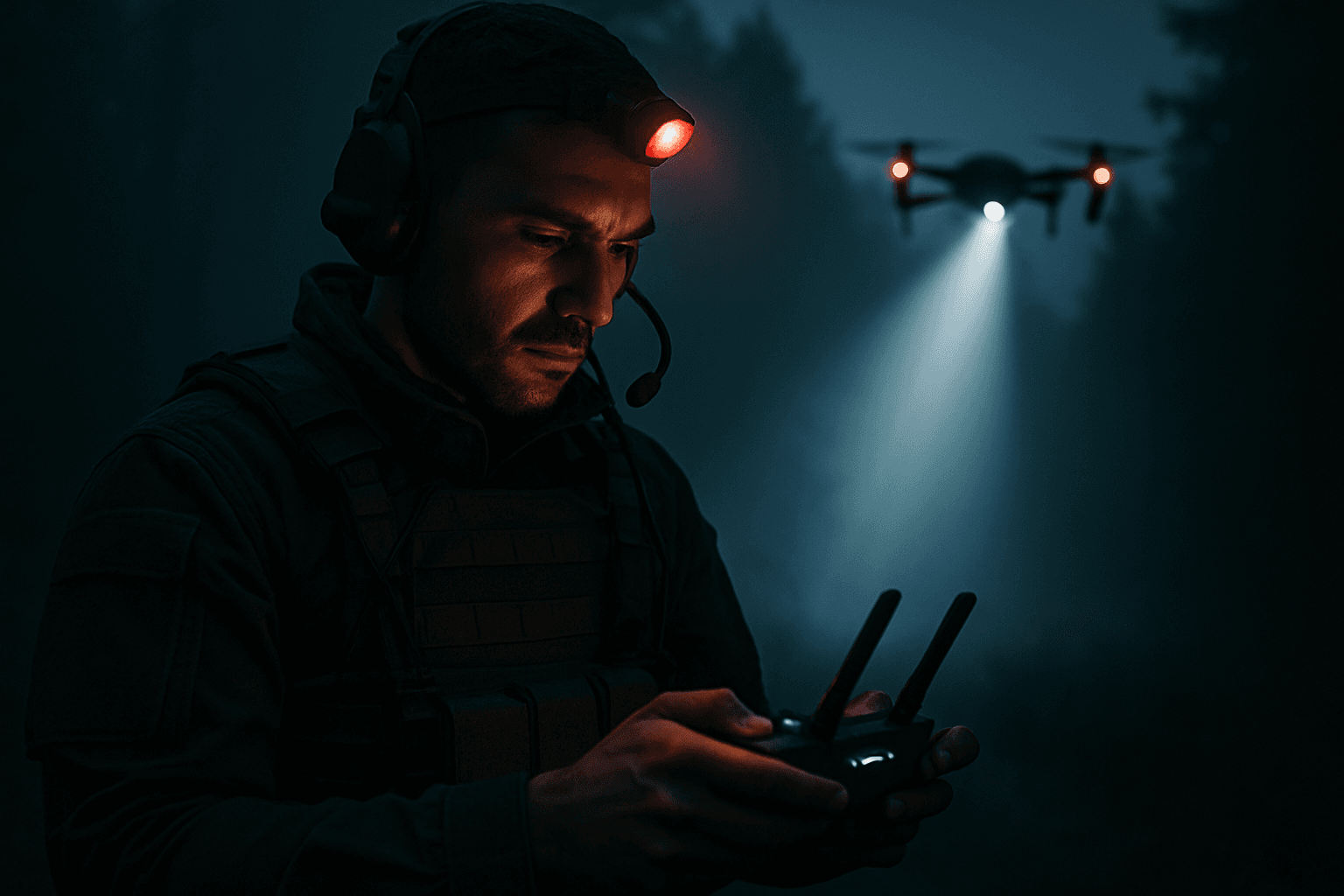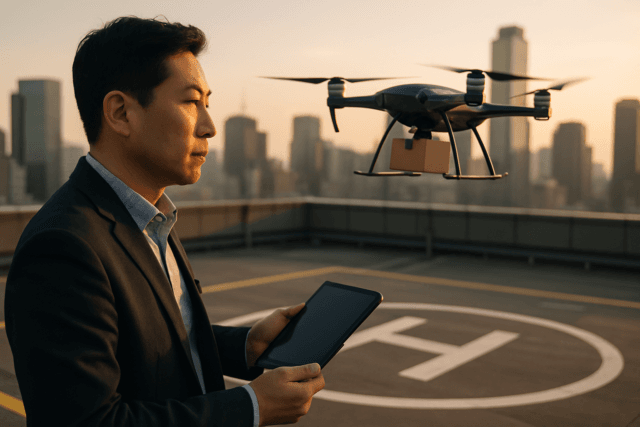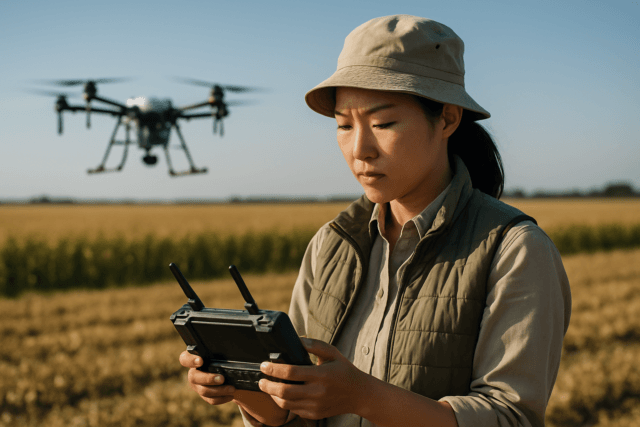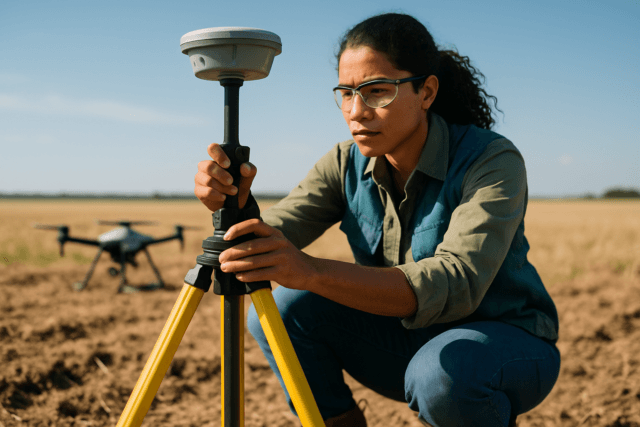In the critical realm of search and rescue (SAR) operations, every second counts. As daylight fades, the challenges faced by rescue teams multiply, with darkness severely limiting visibility and hindering the ability to locate missing persons or assess disaster zones. However, advancements in Unmanned Aerial Systems (UAS), commonly known as drones, equipped with sophisticated lighting solutions are rapidly transforming night search capabilities, offering an unparalleled aerial perspective that turns night into day for first responders.
These specialized drone lighting systems provide essential illumination, extending SAR missions into the crucial nighttime hours and significantly enhancing the safety and efficiency of operations. By integrating high-intensity lights with advanced drone platforms, rescue teams can overcome the traditional limitations of darkness, improve situational awareness, and ultimately increase the chances of successful outcomes.
The Critical Role of Drones in Night Search and Rescue
Drones have become indispensable tools in modern SAR, offering rapid deployment, the ability to access difficult or dangerous terrain, and a bird’s-eye view that covers vast areas more quickly than ground teams alone. During nighttime operations, their value is further amplified. Traditional night searches often rely on handheld lights or expensive, less agile manned aircraft. Drones equipped with powerful lighting systems bridge this gap, providing persistent, localized, and adjustable illumination directly over a search area. This capability ensures 24/7 coverage, extending search operations well into the night and making it possible to identify distress signals or individuals in need of assistance.
The enhanced visibility provided by drone lights is crucial for both the drone’s camera sensors and ground personnel. It allows for clearer imagery and video capture, enabling better analysis and decision-making by command centers. Simultaneously, the illuminated area aids ground teams in navigating treacherous environments, avoiding obstacles, and safely conducting their search.
Types of Drone Lighting Solutions for SAR
Drone lighting solutions come in various forms, each designed for specific illumination needs in SAR missions:
High-Intensity LED Spotlights
Spotlights are engineered to provide concentrated illumination over a specific, often distant, area. These are ideal for focused searches, allowing operators to direct a powerful beam to pinpoint individuals, inspect specific points of interest, or cut through dense foliage. Brands like FoxFury offer high-lumen spotlights such as the D10 and Rugo series, which can provide bright, focused light for tactical and SAR operations. Some systems can illuminate objects up to 200 feet away.
Floodlights and Area Illumination Systems
In contrast to spotlights, floodlights are designed to cast a wide beam of light over a larger area, making them perfect for broader search patterns and illuminating an entire scene. Systems like the FoxFury Nomad 360 Scene Light offer 360-degree area lighting, capable of delivering up to 8,800 lumens. Tethered drone systems, such as Volarious’s V-Light, can provide continuous, high-luminance floodlighting of up to 20,000 lumens by drawing power directly from a ground-based source, overcoming drone battery limitations for extended operations. Some advanced systems, like Freefly Systems’ Flying Sun 1000, can integrate multiple LED panels to achieve up to 300,000 lumens, effectively turning night into day over a significant area.
Thermal Imaging with Integrated Visual Light
While not strictly a “lighting” solution in the visible spectrum, thermal imaging drones are crucial for night SAR by detecting heat signatures rather than light. They can “see” through darkness, smoke, and even some foliage, making them invaluable for locating missing persons by their body heat. Many modern SAR drones, such as the DJI Mavic 3 Thermal, Matrice 30 Thermal, and Autel EVO Max 4T, integrate both thermal and high-resolution visual cameras. Some also incorporate visible light illuminators to provide additional context or to aid visual identification once a heat signature is detected. Skydio’s X2E, for instance, features a dual-sensor payload with a color camera and a FLIR thermal sensor, along with strobing lights in visible and IR wavelengths.
Specialized Lighting (e.g., UV, IR Illuminators)
Beyond standard white light, some drones can be equipped with specialized illuminators like infrared (IR) for covert operations or to enhance night-vision cameras. While invisible to the naked eye, IR light significantly improves the precision of thermal or night-vision cameras, allowing for stealthier missions and enhanced data collection.
Key Features and Considerations for SAR Lighting
When selecting drone lighting solutions for SAR, several critical factors must be considered to ensure optimal performance and mission success:
Brightness and Beam Angle
The lumen output determines the intensity of the light, with higher lumens providing greater illumination. Beam angle defines how concentrated or widespread the light is. For focused searches, a tight beam is advantageous, while a wide flood beam is better for close-range or broad area illumination. The ability to adjust beam intensity and direction remotely offers greater versatility.
Power Consumption and Battery Life
High-powered lights consume significant energy, which can drastically reduce a drone’s flight time. Manufacturers strive to balance brightness with energy efficiency, often using advanced LED technology to extend operational duration. Self-contained LiPo batteries for light modules can offer 40-80 minutes of continuous use. Tethered drone systems offer a solution for continuous, unlimited power, allowing for extended luminance without battery constraints.
Weight and Payload Capacity
The weight of the lighting system must be compatible with the drone’s payload capacity. Heavier lights can reduce flight performance and endurance. Smaller, lighter lights are suitable for compact drones, while larger, more powerful lights require heavy-lift drones.
Durability and Weather Resistance
SAR operations often occur in challenging environments. Lighting systems must be robust, weatherproof, and durable to withstand impacts, moisture, and extreme temperatures.
Integration with Drone Systems
Effective lighting solutions integrate seamlessly with the drone’s flight controller and camera systems, allowing for remote control of light intensity, modes (e.g., continuous, strobe), and sometimes even direction via a gimbal.
Operational Regulations (FAA)
Compliance with aviation regulations, such as those from the FAA in the United States, is paramount. For night operations, drones must be equipped with anti-collision lights that are visible for at least three statute miles and flash or strobe between 40 and 100 times per minute. Remote pilots must also complete specific night flight training and maintain visual line of sight (VLOS) with the drone.
Advantages of Drone Lighting in Night Operations
The integration of advanced lighting into SAR drones offers several transformative advantages:
- Enhanced Visibility: Drones with powerful lights provide unparalleled visibility from an aerial perspective, improving the ability of both drone cameras and ground teams to identify subjects and navigate challenging terrain in low-light conditions.
- Faster Search Times: By illuminating large areas quickly and effectively, drones significantly reduce the time required to locate missing persons, which is critical in time-sensitive emergencies.
- Increased Rescuer Safety: Rescuers can maintain a safer standoff distance while obtaining crucial intelligence, reducing their exposure to hazardous environments.
- Improved Situational Awareness: Live video feeds from illuminated areas provide real-time data to incident commanders, enhancing overall situational awareness and enabling more informed decision-making.
- Cost-Effectiveness: Drones offer a more economical alternative to traditional manned aircraft for aerial illumination, making advanced night search capabilities more accessible to a wider range of public safety agencies.
Challenges and Future Outlook
Despite their significant advantages, drone lighting solutions for SAR face ongoing challenges. Battery life remains a primary concern, as powerful lights quickly drain drone batteries, limiting flight duration. While tethered systems offer unlimited power, they also introduce operational constraints regarding mobility. Other challenges include potential glare affecting vision, light pollution, and ensuring GPS reliability in complex environments.
The future of drone lighting in SAR is promising, with continuous innovation on the horizon. Expect to see further advancements in battery technology, leading to longer flight times for untethered systems. The development of more energy-efficient and brighter LED technology will continue, along with improved integration of AI-powered analytics to assist in target detection under varying lighting conditions. The use of drone swarms with coordinated lighting patterns could also offer comprehensive and adaptive illumination over vast or highly complex search areas.
Conclusion
Drone lighting solutions have fundamentally revolutionized night search and rescue operations, transforming what was once a period of heightened challenge into an opportunity for extended and more effective missions. By providing adaptable, powerful, and precise illumination, these systems enhance visibility, accelerate search efforts, and bolster the safety of rescue personnel. As drone technology continues to evolve, integrated lighting solutions will undoubtedly play an even more pivotal role in saving lives and aiding communities during their darkest hours.





